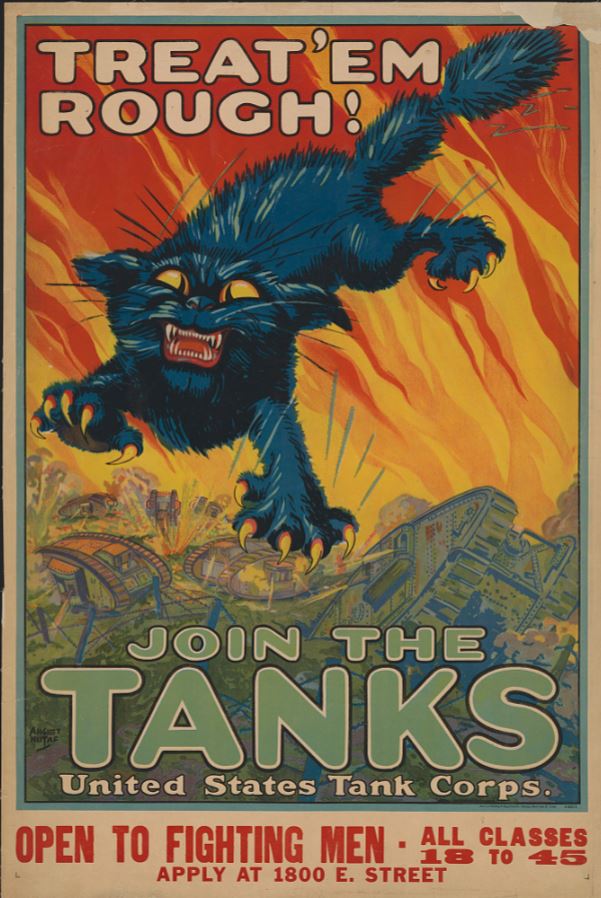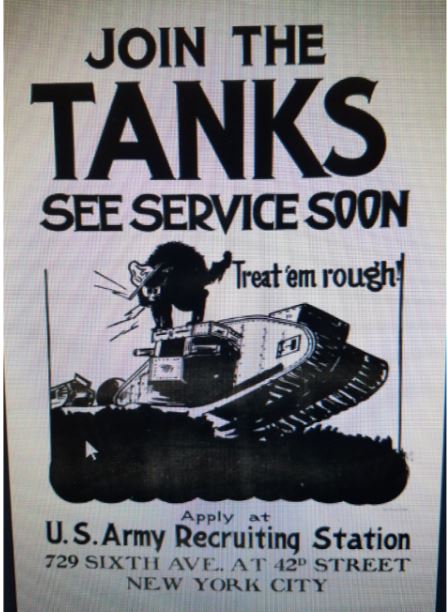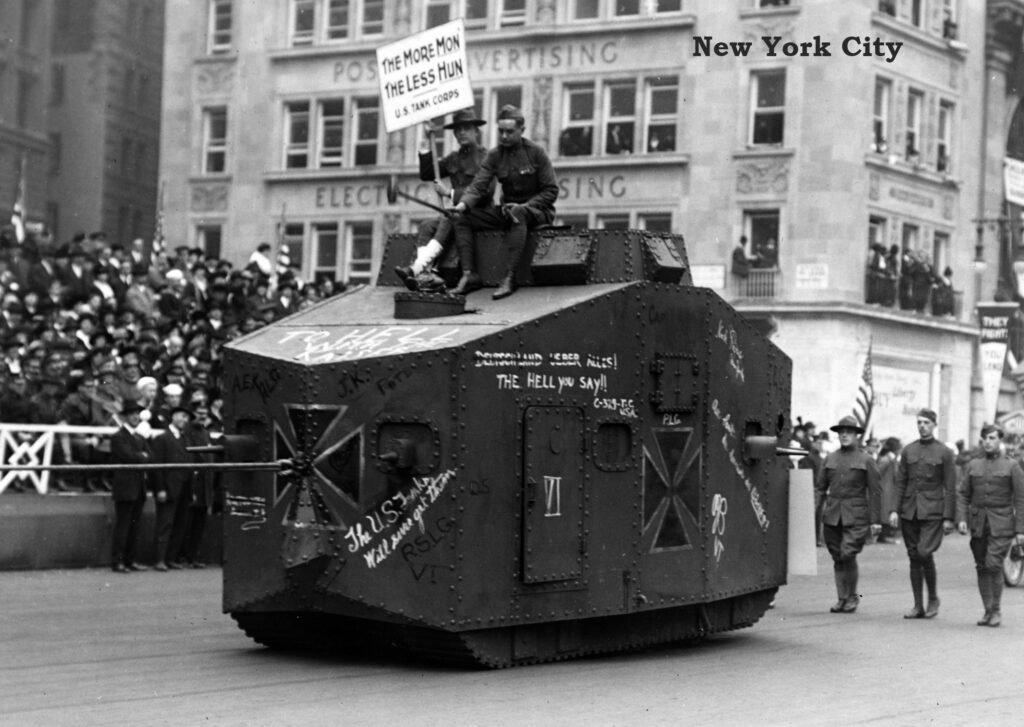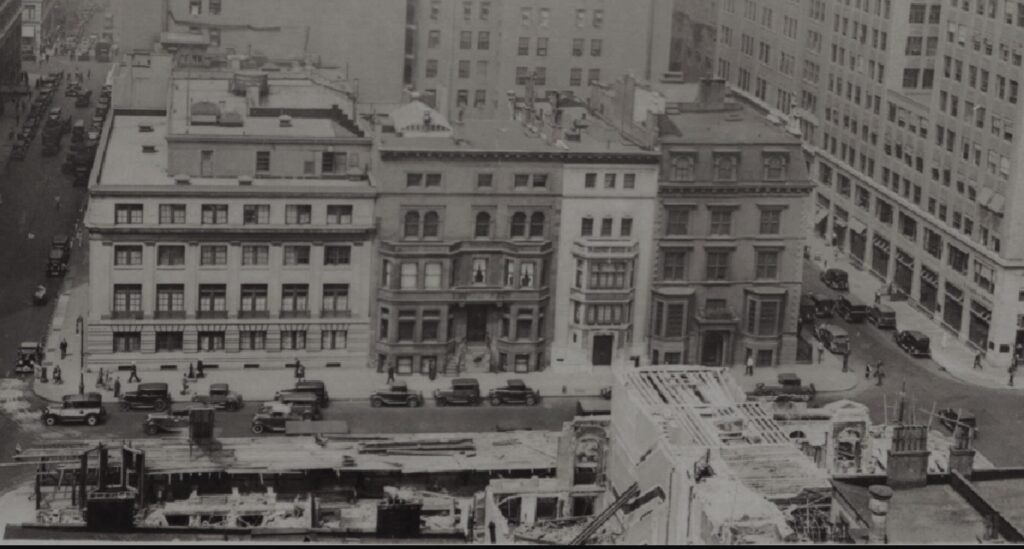
In my last post, I wrote about the brave brigade of cats that patrolled New York’s Army Building for enemy vermin. Because May is Military Appreciation Month, this post is continuing the theme with a story about the mascot cat of the Tank Corps.
The Tank Corps of the American Expeditionary Forces (AEF) engaged in tank warfare on the Western Front during World War I. Captain George S. Patton was the first officer assigned to the unit. Men were recruited beginning in 1917; Brigadier General Samuel D. Rockenback, who served as chief of the Tank Corps, organized, trained, and deployed the first American tank units to Europe in 1918.
In September 1918, the New York Times reported that the Tank Corps men of New York had placed an advertisement for a black cat to serve as its mascot. The corps used a viscous-looking black cat on its recruiting posters, so the men thought it would be great to recruit a live cat that could serve as a mascot as well as an attraction at an upcoming benefit event.

At this time, the Tank Corps was headquartered at 19 West 44th Street. The men also had an actual tank parked across from the New York Public Library at Fifth Avenue and 42nd Street. Atop this tank was a mechanical black cat that would arch its back and swish his tail as a make-believe gun rattled away. The crowds loved it.
While the men waited for people to bring them some cats for consideration, Gustav W. Hufal, a corps member who was also an artist, drew crayon sketches of cats on a large board next to the tank. Although the men said they would pay $2 for a cat, only one young boy brought a black cat to the tank.
According to the Times reporter, the cat was so sleek and looked too well fed to serve with an organization whose motto was “Treat ‘Em Rough!” The men rejected the cat because they wanted one with “a disreputable appearance and a disposition to match his looks.” In other words, they wanted a cat that looked like the one featured on the Tank Corps posters.
Two days later, the men had found their cat. They named the “battle-scarred” black cat with “glazing eyes” Roughneck. As the feline mascot sat on the whippet turret with bared claws, 1,000 “Treat ‘Em Rough boys” marched by up Fifth Avenue on their way to a benefit show at the Century Theatre at 63rd Street and Central Park West.
According to the New-York Tribune, “the men saw the cat, recognized their own and yelled greetings.” In return, Roughneck “crouched with bristling hair and spat back at the outfit.”

In February 1919, the Tank Corps League (the fund-raising organization for the Tank Corps) moved into the parlor floor of a large (40-foot wide), four-story with basement brownstone house at 253 Madison Avenue. The circa 1859 home had previously been home to James Vandenbergh Parker, a well-known clubman who had moved into the home in 1872 with his mother after his father, Charles Maverick Parker died.
The home was open to all 18,000 or more men across the country who had served with the corps. These men were able to use the club for free whenever they wanted.
The clubhouse featured games and a billiard table, plus rooms for reading, writing, and lounging. Certain nights were reserved for girlfriends or wives and dancing. There are no reports of any cats, black or otherwise, living at the club.

The AEF Tank Corps was disbanded after the armistice on November 11, 1918. Remaining personnel transferred to the United States, but the Tank Corps of the National Army was disbanded along with the National Army shortly thereafter, in 1920.
The mansion at 253 Madison Avenue was sold to Dr. Watson L. Savage in November 1919. He made extensive renovations to the home, excavated a rear court, and extended the basement to include a pool and gymnasium. He also converted part of the home into rental units.
By the 1930s, all the homes along the east side of Madison Avenue between 38th and 39th Streets–including 253 Madison Avenue–had been torn down. Today the site is occupied by one block-long building, 261 Madison Avenue.






So what happened to Roughneck after the unit disbanded?
I wish I knew! I have a feeling the poor street cat landed back in the streets after the parade was over, but we’ll probably never know.